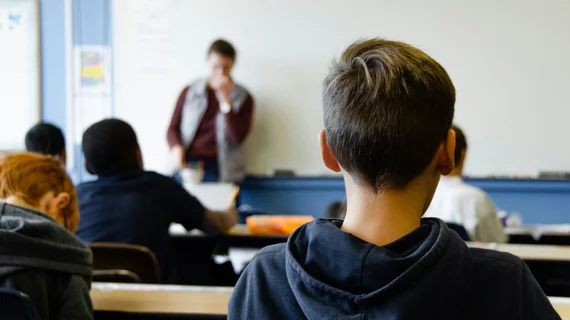Medical students want more competency-based learning opportunities in imaging
Providing medical students with more hands-on and case-based learning opportunities could improve their competency in imaging, regardless of whether they intend to pursue radiology as a specialty.
Traditional lecture-based medical teachings still account for the majority of educational content. However, ample evidence highlighting the benefits of competency-based training has come forward in recent years, prompting some educators to reimagine the way medical students are taught about different specialties. When considering how many specialties integrate imaging into their diagnostic processes, it is especially important to ensure students are well equipped with knowledge necessary to utilize radiology exams properly.
Now, a new report is detailing students’ support for changing up the educational formats available to them. Published in Insights Into Imaging, the paper explores how transitioning from lecture-based to competency-based learning affects students' understanding and proficiency in radiology topics.
“Given the importance of radiology in clinical practice, there is a clear need for a resilient education of medical students—our future physicians. This need is increasingly met by a demand for high-quality radiology teaching that emphasizes interactive, case- and problem-based learning rather than traditional, passive lecturing,” Max Mastoff, with the Clinic for Radiology at University Hospital of Münster in Germany, and colleagues suggest. “It has been shown that problem-based learning not only fosters long-term knowledge retention and the practical application of skills but also enhances soft skills such as communication and intellectual curiosity when compared to lecture-based learning.”
The group gauged the interest of hundreds of medical students by having them complete a competency-based radiology course (specific to abdominal diagnostics) that incorporated technology-enhanced individual casework, small group discussions and concise lectures. Prior to and following the course, students answered a questionnaire regarding their perceived knowledge of the field.
Students reported finding the course highly relevant and applicable to their careers as physicians. For their perceived competency in modality selection and description and interpretation of common pathologies, students strongly agreed the course improved their skills. These improvements were most notable for CT- and MRI-related information.
The students also found the course more motivating and of higher quality than lecture-based seminars. However, despite the improvements in competency, the course did not sway interest in pursuing radiology as a career path.
Although the course left room for improvement, researchers suggest their findings are still important for understanding how to adapt education to students’ evolving preference for more hands-on opportunities.
“Addressing the ultimate goal of medical education—producing better healthcare providers capable of meeting future challenges in the rapidly evolving field of medicine—requires further research to evaluate these long-term impacts,” the authors note. “However, it is well-documented that enjoyment during learning—though inherently subjective, as captured in our survey—is critical for fostering interest in the medical field and shaping professional identity.”

